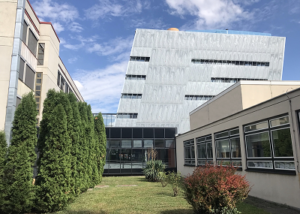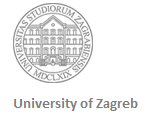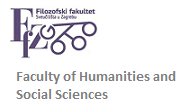Course title: Contemporary US Ethnic Literatures
Instructor: Assoc. Prof. Jelena Šesnić
Semester: 7th or 9th
Course description: The course will look into a very innovative and dynamic section of contemporary US literary/cultural production—literature produced by and about different established and newly arisen “ethnic communities” with special focus on post-Vietnam War developments. We shall address new modes of representing the ways of belonging, community and citizenship in relation to representative ethnic groups (African American, Native American), while in the second part of the course the attention will be given to the ways new cultural productions (both visual and textual) address concerns felt by more recent or recently more visible ethnic and racial formations (Asian American, Latino, Arab American, etc.). These textual and visual artefacts make evident some continuing concerns with nation- and community-building in the States, while they depict a new class of national subjects, a new generation of Americans.
Reading / viewing list
Primary texts
Novels/ memoirs:
– Barack Obama, Dreams from My Father: A Story of Race and Inheritance (1995)
– Chang-rae Lee, Native Speaker (1995)
– Dao Strom, Grass Roof, Tin Roof (2003)
Short stories:
– Bharati Muhkerjee, The Middleman and Other Stories (1988; selection)
– Jhumpa Lahiri, Interpreter of Maladies (1999; selection)
– Sandra Cisneros, “Woman Hollering Creek” (1991; from: The Latino Reader)
– Tahira Naqvi, “Thank God for the Jews” (from: W. Brown and A. Ling, eds. Imagining America: Stories from the Promised Land (2002)
Poetry:
– Mohja Kahf, E-mails from Scheherazad (2003; selection); D.H. Melhem; Pauline Kaldas
Films
– The Searchers (John Ford, 1956); Smoke Signals (Chris Eyre, 1998); Lone Star (John Sayles, 1996)
Secondary readings
General introduction:
– Burgett, Bruce, and Glenn Hendler, eds. Keywords for American Cultural Studies. New York and London: NYUP, 2007. (Entries: “Border”, “Citizenship”, “Diaspora”, “Ethnicity”, “Immigration”, “Mestizo”, “Nation”, “Naturalization”, “Race”)
– Omi, Michael, and Howard Winant. Racial Formations in the United States: From the 1960s to the 1990s. 2nd ed. London and New York: Routledge, 1994. 53-76.
– Sollors, Werner. Beyond Ethnicity: Consent and Descent in American Culture. New York and Oxford: Oxford UP, 1986. 20-39.
Supplementary reading:
– Gilroy, Paul. “The Black Atlantic as a Counterculture of Modernity.” The Black Atlantic: Modernity and Double Consciousness. Cambridge: Harvard UP, 1993. 1-19.
– Bronfen, Elisabeth. Home in Hollywood: The Imaginary Geography of Cinema. New York: Columbia UP, 2004. 95-125.
– Fraser, Joelle, Sherman Alexie. “An Interview with Sherman Alexie.” The Iowa Review 30.3 (Winter 2000/2001): 59-70.
– An Interview with B. Mukherjee, available at Jouvert. A Journal of Postcolonial Studies
– Behdad, Ali. “Critical Historicism.” American Literary History 20.1-2 (Spring-Summer 2008): 286-99.
– Koshy, Susan. “Postcolonial Studies after 9/11: A Response to Ali Behdad.” American Literary History 20.1-2 (Spring-Summer 2008): 300-303.
– Anon., ”El Plan Espiritual de Aztlán.” 1969, available at Aztlan Historical Documents
– Anzaldúa, Gloria. “The New Mestiza. Towards a New Consciousness.” Borderlands/La Frontera. San Francisco: Aunt Lute Books, 1987. 99-113.
– Grewal, Inderpal. “Introduction: Neoliberal Citizenship: The Governmentality of Rights and Consumer Culture.” Transnational America: Feminisms, Diasporas, Neoliberalisms. Durham and London: Duke UP, 2005. 1-34.
– Jun, Helen Heran. Race for Citizenship: Black Orientalism and Asian Uplift from Pre-Emancipation to Neoliberal America, New York: NYU P, 2011. 123-48.
– Bhabha, Homi. “DissemiNation. Time, narrative and the margins of the modern nation.” The Location of Culture. 1994. New York and London: Routledge Classics, 2004. 199-226.
Course requirements: Continuous assessment (attendance, participation: 10% of the final grade; oral presentation: 10%; assignments: 10%; seminar paper: 30%; mid-term and final tests: 40%). Students need to get a pass for all of the above elements.



